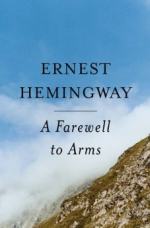|
This section contains 8,720 words (approx. 30 pages at 300 words per page) |

|
SOURCE: “The Novel as War: Lies and Truth in Hemingway's A Farewell to Arms,” in Modern Fiction Studies, Vol. 40, No. 4, Winter, 1994, pp. 689-710.
In the following essay, Norris uses reader-response criticism to argue that Hemingway uses the love story in the novel to turn readers' attention from the brutal realities of war.
The project of reevaluating Modernism in terms of the political interests that informed its formalistic claims has particularly questioned the aesthetics of the American moderns—Pound, Eliot, Stein, Fitzgerald, and Hemingway. Hemingway's style has suffered an especially damaging translation into its ideological determinants—for example, Walter Benn Michaels reading the signature of simplicity (“nice” “good” “true”) in Hemingway's miraculously clean prose as the transformation of racism (“breeding”) into aesthetics (196). While revisionary skepticism has, of course, regularly followed praise of Hemingway throughout his publication history, contemporary ideological criticism—in which New Historicism has taken the lead—proposes...
|
This section contains 8,720 words (approx. 30 pages at 300 words per page) |

|


